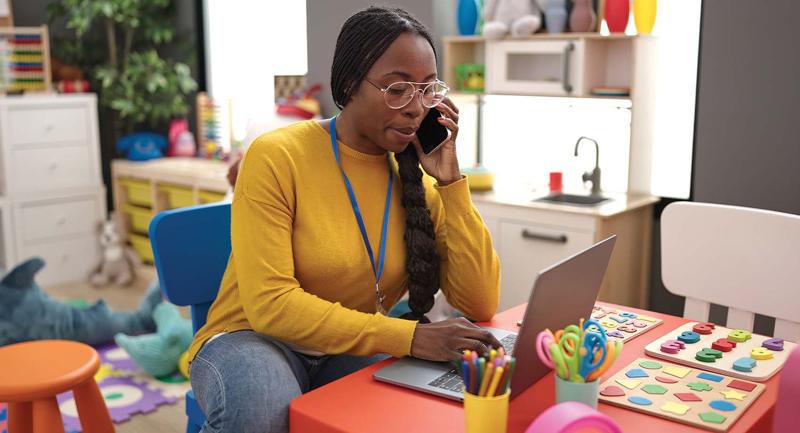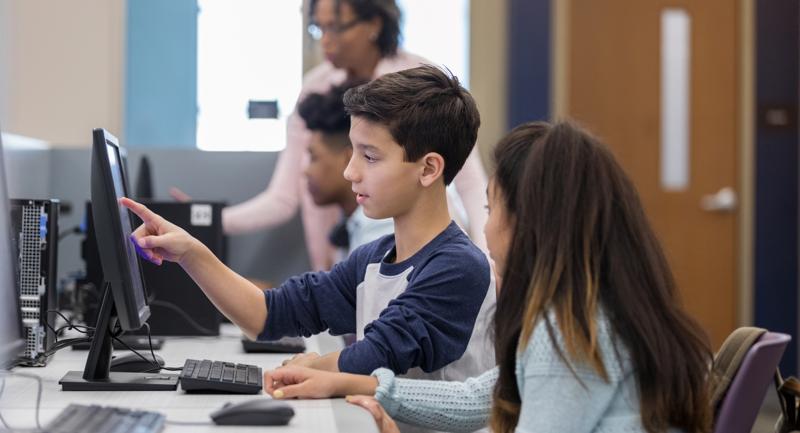During my classroom teaching career, one of my middle school students once pointed out that a common back-to-school assignment was classist, racist, and full of microaggressions. The assignment many teachers in our district used throughout all grade levels was around the question, “What did you do over the summer?” In previous years, students from high-income backgrounds who created projects about their European or tropical island vacations were elevated as having the most valuable experiences.
My student, who spent the summer working in a family restaurant and couldn’t afford an extravagant vacation, felt invalidated and marginalized when teachers put value on the summer experiences that required economic access. Furthermore, students were required to write an essay, rather than having options for choosing how to represent their experiences.
Our school’s student body was diverse in racial backgrounds and income levels. This assignment alienated a large portion of our lower-income students, many of whom were Black and Brown.
Including platform and delivery choice in addition to shifting the topic was a key part of making the assignment more equitable. Instead of taking a prescribed approach, the students—who all had access to the same devices, platforms, and applications in my classroom—could center their own cultural identity and assets, using their values to identify what they saw as the connection to the material. By being encouraged to actualize their own learning, they were more invested in sharing with classmates. It also helped that the student trusted me enough to share their true feelings, and I acknowledged the problematic experiences of too many students. I not only changed the work in the way I thought was best, but was able to give the students access to differentiated technology channels.
A Persistent Digital Divide
Technology, distributed and used equitably, enables opportunity and voice, dismantles barriers around learner exceptionalities, democratizes access to information, and disrupts racial and economic-privilege hierarchies.
“Techquity” means merging the effective use of educational technologies with culturally responsive and culturally relevant learning experiences to support students’ development of essential skills.
In the last year, however, I have found myself questioning a lot of prominent voices in education technology, including my own, because they tend to oversimplify a complex situation. Much of the ed-tech sphere centers the voices of white educators, who often focus on minor tweaks of the existing system rather than questioning the system as a whole. This is not to pick on individuals. Rather, it is to say that we should be interrogating why most technology initiatives and discussions work within the existing structures when those structures most often aren’t working for students, especially students of color.
As our districts and education organizations look to where we are and where we want to be after more than a year of pandemic-related disruption, one of the most important lessons we can learn is that it is not possible to have a truly equitable learning environment absent of robust technology access. You can’t address other equity factors until you ensure access as a foundational baseline.
Even after pandemic-related efforts to close the digital divide, there are gaps between what well-resourced schools and under-resourced schools are able to do. Around 12 million K–12 students still lack access to a device, broadband internet, or both.1 Both rural and urban schools and communities continue to deal with what I call digital redlining, where certain areas do not have broadband access or unreliable cell coverage. Despite districts handing out hotspots, students aren’t always guaranteed a strong signal. Technology access can even vary within a school building. Students are being denied access to what others have, in some cases by design—or at least by neglect.
Individuals do not have control over regional technology infrastructures, yet we still tend to place a significant degree of responsibility on students, educators, and site administrators to fix issues with technology or to succeed despite not having the proper resources. You can’t blame or punish a school for lack of access when you don’t have the infrastructure in the first place. I know of teachers who want to do right by their students with more differentiated technology assignments that go beyond routine thinking tasks, but this proves difficult when their school mandates the use of Google platforms on iPads, rather than empowering the teacher and students to choose the method and tools that work best for them. That’s a prime example of educators seeing the bigger picture, while system creates very narrow guardrails to operate within.
Beyond Access
But just having basic access to technology is not a silver bullet. How do we ensure that access directly correlates to equitable opportunities and assignments? When I talk to educators are on in one-to-one settings with laptops or iPads and have a range apps, I encourage them to think very critically about how exactly they’re using those tools, the same way my student encouraged me. How do experiences directly correlate to the desired outcomes that students have identified for themselves?
Key Takeaway
Technology-based learning experiences should align with and encourage higher-order thinking and greater creativity. We cannot simply set students in front of screens.
For Black and Brown learners especially, the digitization of lessons often equates to online worksheets and repetitive tasks rather than rich, meaningful learning. Instead of using technology as an intervention mechanism or simply digitizing one-size-fits-all instruction, we need to ask whether we are meeting learners on a personalized basis. Technology-based learning experiences should align with and encourage higher-order thinking and greater creativity. We cannot simply set students in front of screens.
In turn, school leaders should think about what resources, professional development, and support they can provide to educators to ensure technology use aligns to more equitable learning experiences. In a new era, keeping techquity at the center of our classrooms has never been more important.









